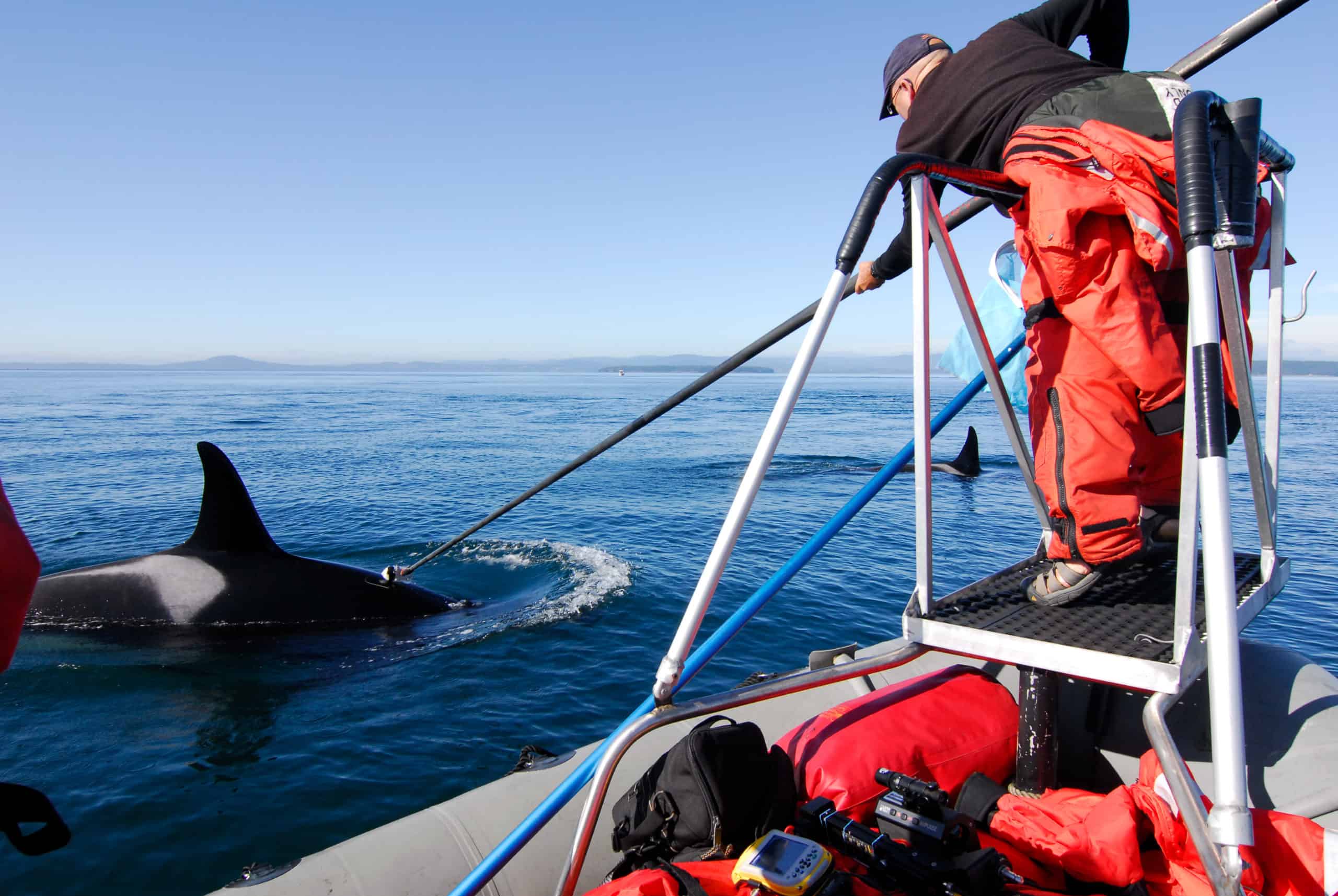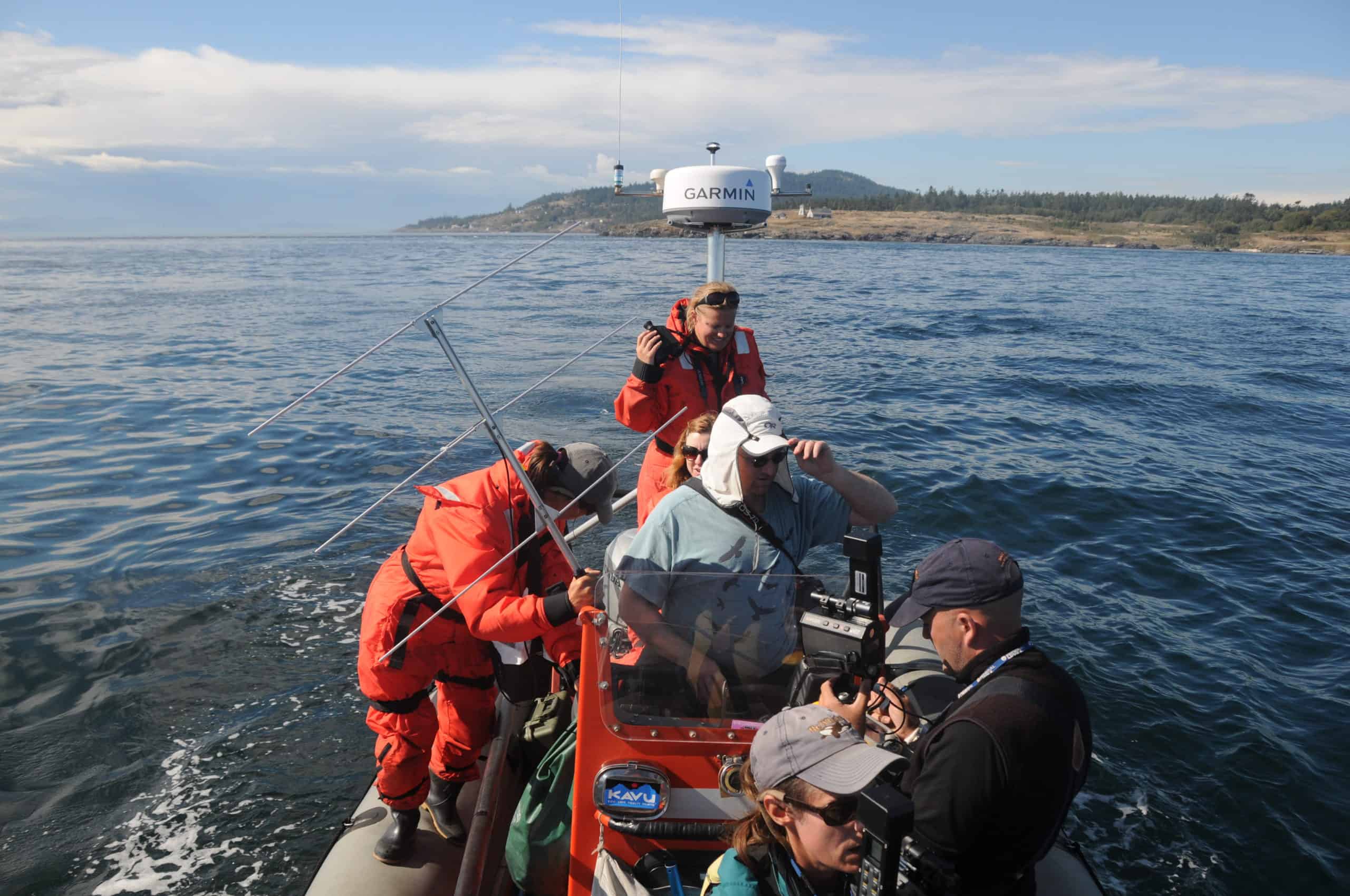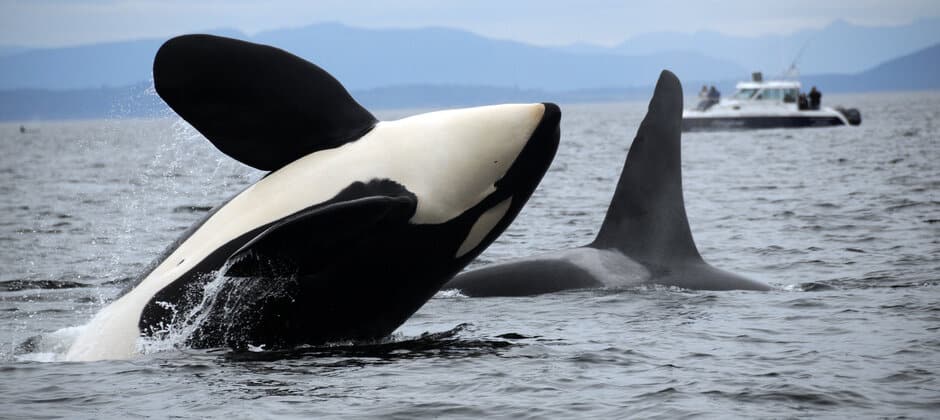Share this article
Boat speed and sonar may thwart killer whales’ hunt for prey
When killer whales prowl the dark coastal waters of Washington state and British Columbia, sound helps more than sight. The marine mammals pulse a series of underwater clicks that beam like a flashlight and bounce back off their prey, similar to the way bats hunt during flight.
But new research shows that boat speed and sonar may disrupt the whales’ hunt by masking echolocation sounds they need to survive.
“Vessels might interfere with the whales’ specialized use of sound to find an ever-decreasing presence of salmon,” said Marla Holt, a researcher with the National Oceanic and Atmospheric Administration.
Two groups of killer whales live in the region: the northern residents in Canadian waters and the southern residents off the Washington state and lower British Columbia coasts. While the northern residents’ population is recovering, less than 75 southern residents, listed as endangered by the National Oceanic and Atmospheric Administration, remain in the urban coastal corridor near Seattle. Holt and her colleagues wanted to learn if ship traffic may contribute to the southern population’s decline.

A NOAA researcher carefully places a suction-cup biologging tag on a killer whale.
Credit: Deborah Giles, UW Friday Harbor Labs, under NMFS Permit No. 781–1824/16163
First, they needed to examine the whales’ deep acrobatic dives for salmon. Holt has studied southern residents for 15 years. She and her team traveled to the whales’ summer home range in the Salish Sea, a small section of the Pacific that wraps around the San Juan Islands in Washington and the Gulf Islands of British Columbia. Using a fiber-carbon pole, Holt and her team reached from the bow of their research vessel and attached biologging tags to the shiny surface of the whales. The suction-cup tags recorded both sound and movement. The team also recorded nearby ship traffic.
“We asked what aspects of vessel traffic may pose the largest risks to the whales’ endangered status,” said Holt, who led the study published in Marine Environmental Research.

The research crew records the noises of whales with tags attached to the them.
Credit: Candice Emmons, NOAA, under NMFS Permit No. 781–1824/16163
The monitoring tags used high-resolution accelerometers and magnetometers to record the animals’ diving motions. That’s the same technology a smartphone uses to determine which way is up when its screen is tilted. Two hydrophones in each tag captured the whales’ calls, echolocation buzzes and clicks, and the crunching and tearing when they devoured their prey.
When a killer whale first locks onto a fish—salmon don’t swim in schools, so whales pursue them one at a time—they dive deep and send out pulses of sound to keep track of their prey. Once it homes in on a fish, the whale rolls and twists, plunging hundreds of feet at up to eight miles per hour. As it closes in, the whale clicks so fast it sounds like buzzing to human ears.
Monitoring the interplay of whales’ hunting behavior and nearby vessel activity provides critical data to inform management of the endangered animal, Holt said. “We need to understand the intersection of killer whale biology and how they’re using sounds, as well as how our activity affects them.”

The biologging tag is held on with suction-cups. It records the whale’s movements and echolocation clicks as it hunts underwater. Credit: Brad Hanson, NOAA, under NMFS Permit No. 781–1824/16163
Holt was somewhat surprised by the study’s results. She anticipated overall vessel noise might be a significant contributing factor, but there were two variables that affected the animals’ behavior most—average speed of vessels near the whales and echosounders.
Some boats use echosounders, or underwater sonar, for navigation, and fishing vessels use them to find their quarry. The devices emit sound in the same frequency range killer whales use to hunt. Echosounder signals were detected in over half the recorded whale dives. When nearby vessels emitted sonar signals, whales dived longer to capture prey. They also descended more slowly to initiate dives.
In addition, the researchers found the probability of capturing prey decreased as nearby vessel speed increased. That may be because faster boats create more noise and commotion.
Holt compared it to a cheetah pursuing a gazelle. If a bunch of people are zooming around in jeeps trying to observe the cheetah’s chase, that might interfere with the animal’s ability to catch its fleeing prey.
“Imagine if you have to dive deep and chase a fish that goes to the bottom to escape, or tries to find a place to hide,” Holt said. If vessels are speeding around above you as you come to the surface to breathe, it could affect your ability to acoustically track the fish, she added.
Nora Nickum, senior ocean policy manager at the Seattle Aquarium, said Holt’s research makes it clear that vessels and other human sounds directly interfere with the whales’ activity. “Both the noise and the presence of boats change the animals’ behavior,” she said.
Washington state’s Quiet Sound program might provide one solution. Nickum helped advocate for the funding of Quiet Sound, which includes an alert system that warns commercial mariners when whales are nearby, so they can slow down or alter course. It is based off a successful program in Canada.
“The goal [of Quiet Sound] is to give killer whales more space and quiet to find more food so they can be better nourished and support a growing population,” Nickum said. “This is a pretty noisy place if you live underwater.”
Celeste Hankins is a science writer based on the Olympic Peninsula in Washington state. You can follow her on Twitter at @CelesteHankins1.
Header Image:
Less than 75 southern resident killer whales remain in the Salish Sea, a small section of the Pacific that wraps around the San Juan Islands in Washington state and the Gulf Islands of British Columbia.
Credit: Candice Emmons, NOAA, under NMFS Permit No. 781–1824/16163








